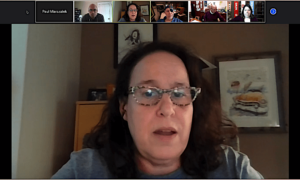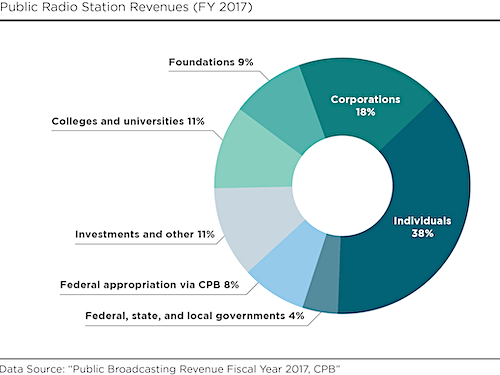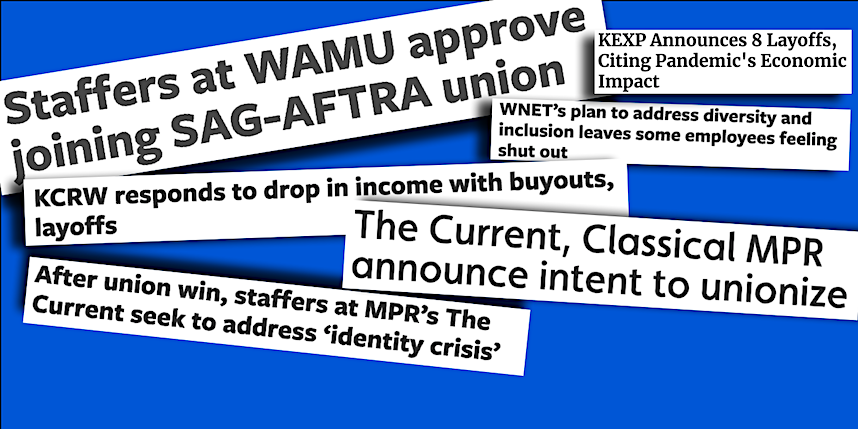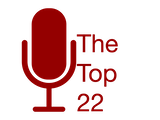Our annual countdown of the people, music, ideas, and news that impacted the year: Three from the NON-COMM world…
By Paul Marszalek
TheTop22.com
 #6 Abby Goldstein
#6 Abby Goldstein
Just as Andrea Paschal from CIMS (#8) came into a new position only to get her business conked over the head with COVID-19, it’s virtually the same story for Abby Goldstein. In her first full year as President and Executive Director of the Public Radio Program Directors Association (aka PRPD), Abby was tasked with making a diving catch of the annual PRPD conference. Branded as “Let’s Go Live,” the event went virtual with a Zoom-on-steriods platform. Goldstein put together a strong program, dramatically dropped the price, and the whole thing ended up being pretty great. Plenty of work ahead for Abby in ’21 – See #4.
 #5 Public Radio Members
#5 Public Radio Members
In the early days of the pandemic, NON-COMM radio stations faced a dilemma – fund drive or no fund drive? With public radio’s three primary underwriting verticals – entertainment, education, and medical/health in a collective tailspin, turning to members for support was, for some, becoming a life or death question. Listener support, on average, makes up nearly 40% of radio station budgets. For some, it’s more.
With some stations unable to participate in the PPP loan program, concerns about sounding tone deaf – asking for money during a lockdown – faded, replaced with tactics to adjust the tone of a drive. Stations dipped their toes into drives with a brutal honesty, while acknowledging the larger crisis. It worked. While many long-time members could not participate this time around, others chipped in more.
With underwriting, which can contribute 15-20% of annual budgets, looking largely dead through the first half of the year, public radio’s alternate business model – the voluntary tax on users – will hopefully keep them afloat.
If there is a concern, it’s that the support of members has lulled some in public radio to sleep. Having seemingly dodged a bullet, they get complacent regarding multiple, significant threats to the service that need to be immediately addressed. See #4.
 #4 Trouble in Paradise
#4 Trouble in Paradise
For decades, landing a gig in public media has been the goal of many smart, service-oriented media professionals. That may be changing.
Public Radio is facing significant headwinds. Perhaps the most urgent are related to the COVID-19 pandemic as budgets are cut, projects are scrapped, and layoffs occur. Most NON-COMM music stations are seeing very significant losses in cume. Weekly audiences are off 20-30% in some cases. The assumption is that these lost listeners will return, but there’s no guarantee. Public radio stations are hamstrung – the content pipeline, fresh ideas, and marketing dollars necessary for growth are all in very short supply.
Listener habits are changing, and you don’t need to look farther than your own behavior. I know that Sarah Silverman and the Smartless podcasts are absolutely eating into my public radio content listening. These are smart, funny shows with stars and great bookings.
Which brings me to a few of public radio’s systemic problems — which, by the way, are largely self-inflicted.
Public Media, weirdly, seems to be allergic to talent – “it’s not supposed to have stars.” Not only is this a terrible approach, but the idea has trickled down to the producer and maker level. Creative outsiders with “off-brand” ideas are strongly discouraged – and have been for years.
Public Radio’s Diversity and Inclusion problem, only seemingly recognized in the past year, was decades in the making. We’ll go into this more deeply in a future column, but for now, let’s just acknowledge that D&I, also often referenced as DEI, is an unmitigated disaster that will be difficult to rapidly fix.
Some stations are scrambling to hire more people of color, but the concern is that they may be box-checking. Diversity and Inclusion are related but very different concepts, and based on well-meaning conference calls I’ve been part of this year, many people don’t understand the nuanced difference, lumping them together as synonyms.
While surface bias, the easily recognizable kind that can be gauged by looking around the room, is a huge and obvious problem, public radio’s hiring practices compound it with an excessive focus on type and fit. Is she really “public radio?” Is he really “public media?” How would they fit in the “system?” These questions regularly disqualify candidates regardless of ethnic background, gender identity, and/or age.
As people repeatedly hire versions of themselves, the result is a self-reinforcing monoculture that has robbed public media of ideas, perspectives, and expertise — ultimately harming growth and threatening a recovery.
They call it a “the system” for a reason. Entrenched management teams with the same headhunters and the same consultants hire the same type and fit, while the system delivers grants to the same stations and producers.
The system is finally starting to see the results of listening to its echo-chamber and its failure to include others. For example, foot-dragging on diversity is starting to claim casualties at the highest levels.
Unionization, while not completely uncommon, has picked up steam as SAG-AFTRA welcomes stations like The Current, WAMU, and KCRW, where employees complained that either fixes weren’t fast enough, or they felt they just weren’t being heard. I’m not a union-basher, I belong to one. But you don’t have to be Peter Drucker to know that the top causes of a union vote include distracted, insufficiently experienced, or sometimes aloof management.
And so the brain drain begins. Why work in public radio when you can work for Gimlet or The New York Times? Why work for public radio when you can start a Gimlet? Why work for PRX when you can work for Apple or Spotify? Why be a pioneer as a person of color in public radio if you’re not going to be invited to the creative meetings?
Public radio is in a very serious storm, and the system may not have the talent in place to guide its return to growth. Too many players with too many blind spots.
Should the slow, steady erosion continue, it will not be due to some change in technology. It will be due to an insular mentality, a failure of imagination, and a refusal or inability to listen.
 -The Top 22 – Triple A, Indie, Alternative Rock
-The Top 22 – Triple A, Indie, Alternative Rock


Despite the large cuts at Public Radio, they still have far more staff on hand than at commercial stations. iHeart, Cumulus and others have reduced Top 40 stations in markets like Cleveland to iPod status. No live local talent. It’s encouraging to see The Current ahead of heritage Top 40 KDWB in the ratings. The good news is Public Radio has time to make adjustments. Commercial Radio seems to be beyond the point of no return.